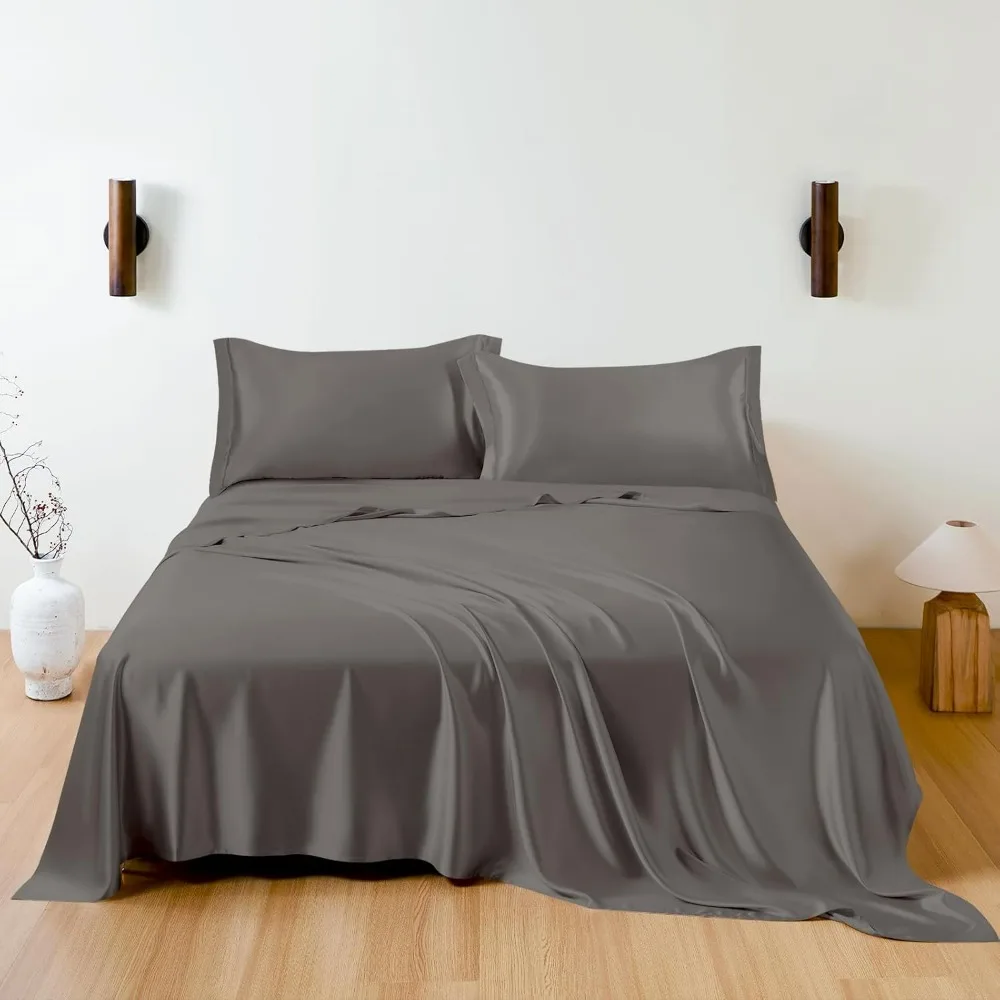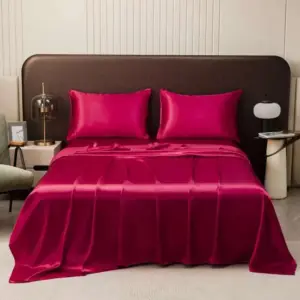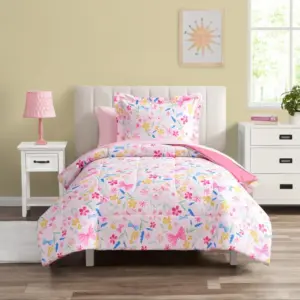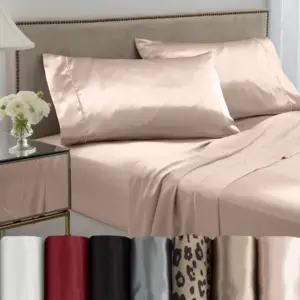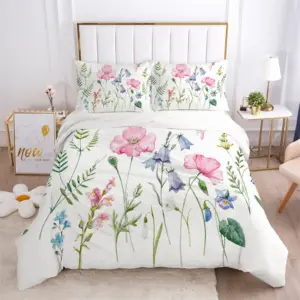Introduction: Elevating Your Sleep Experience with Silk Bedding
Silk bedding represents the pinnacle of luxury sleeping solutions, offering an unparalleled combination of comfort and practical benefits. When you invest in silk bedding, you’re not just purchasing sheets – you’re transforming your entire sleep experience. But not all silk bedding is created equal, and one crucial factor that determines quality is the weave.
The weave of silk fabric significantly impacts how your bedding feels against your skin, how it looks on your bed, and how it performs night after night. Different weaves create varying textures, appearances, and durability profiles that can dramatically change your experience with silk bedding.
In this comprehensive guide, we’ll explore the most common silk weaves used in luxury bedding, including:
- Charmeuse – the quintessential silk bedding weave
- Plain weave – lightweight and versatile
- Twill – durable and distinctive
- Jacquard – elegant and decorative
- Dobby – subtly textured and patterned
We’ll also delve into momme weight—the standard for measuring silk quality—and help you make informed decisions when investing in silk bedding to enhance your sleep sanctuary.
Understanding the right silk weave for your needs is essential for finding bedding that perfectly aligns with your comfort preferences and lifestyle requirements.
What Makes Silk Bedding Special?
Silk stands apart from other bedding materials thanks to its unique natural properties. As a protein fiber produced by silkworms—with Mulberry silk being the premium choice for quality bedding—silk offers benefits that synthetic materials simply cannot replicate.
The exceptional qualities of silk bedding include:
- Hypoallergenic properties: Silk naturally resists dust mites, mold, and mildew, making it ideal for allergy sufferers.
- Temperature regulation: Silk adapts to body temperature, keeping you cool in summer and warm in winter.
- Moisture-wicking abilities: Silk absorbs up to 30% of its weight in moisture without feeling damp, helping regulate humidity as you sleep.
- Skin and hair benefits: The natural amino acids in silk are similar to those in human skin, helping reduce friction that can cause sleep wrinkles and bedhead.
- Incredible softness: The smooth texture feels luxurious against the skin, creating an immediate sense of comfort.
These inherent characteristics make silk an exceptional choice for bedding, but the specific type of silk used for bedding and its weave pattern dramatically affect how these qualities are expressed in the final product. The weaving technique determines whether your silk sheets will be ultra-smooth, lightly textured, or decoratively patterned—all while maintaining silk’s natural benefits.
Understanding Momme Weight: The Measure of Silk Quality
When shopping for silk bedding, you’ll often encounter the term “momme” (pronounced “moe-me”). Unlike cotton’s thread count, momme weight is the standard measurement for silk quality, indicating the density and durability of the fabric. Specifically, one momme equals 4.340 grams per square meter or 0.137 ounces per square yard of fabric.
The momme weight directly affects how your silk bedding will look, feel, and last over time:
| Momme Range | Best For | Characteristics |
|---|---|---|
| 16-19 momme | Decorative pieces, summer-weight accessories | Lightweight, semi-sheer, very soft |
| 19-22 momme | Sheets, pillowcases | Balanced weight, good opacity, excellent drape |
| 22-25 momme | Premium sheets, duvet covers | Substantial feel, opaque, excellent durability |
| 25-30 momme | Luxury duvet covers, heirloom pieces | Heavy, very opaque, maximum durability |
For most bedding applications, the sweet spot lies between 19-25 momme, offering the ideal balance of luxury feel and practical durability. Lower momme weights may feel wonderfully lightweight but can be too delicate for regular use, while higher weights provide maximum durability but might feel too heavy for some sleepers.
It’s important to note that higher momme doesn’t automatically mean better quality—the appropriate weight depends on the specific bedding item and your personal preferences. Understanding momme weight helps you make more informed choices when investing in silk bedding that will provide years of luxurious sleep.
Silk vs. Satin: Clearing Up the Confusion
One of the most common misunderstandings in the world of luxury bedding is the difference between silk and satin. To clarify:
- Silk is a natural fiber produced by silkworms
- Satin is a weaving technique that creates a specific fabric structure
This distinction is critical because satin describes how threads are interlaced, not what they’re made of. Satin weave can be created using silk fibers (producing “silk satin” or “silk charmeuse”) or synthetic fibers like polyester (creating “polyester satin”).
When shopping for bedding, you might encounter products labeled simply as “satin sheets.” These are typically made from polyester or nylon fibers woven in a satin pattern—not genuine silk. While they may mimic the glossy appearance of silk satin, they lack the natural benefits of silk fibers.
True silk bedding with a satin weave (typically called charmeuse) offers significantly different benefits than synthetic satin, including:
- Natural temperature regulation instead of heat retention
- Moisture-wicking properties rather than trapping moisture
- Hypoallergenic qualities not found in synthetic alternatives
- Skin-friendly protein fibers versus petroleum-based synthetics
Understanding the various types of silk fabric and how they’re woven helps ensure you’re investing in genuine silk bedding that delivers all the natural benefits you’re seeking.
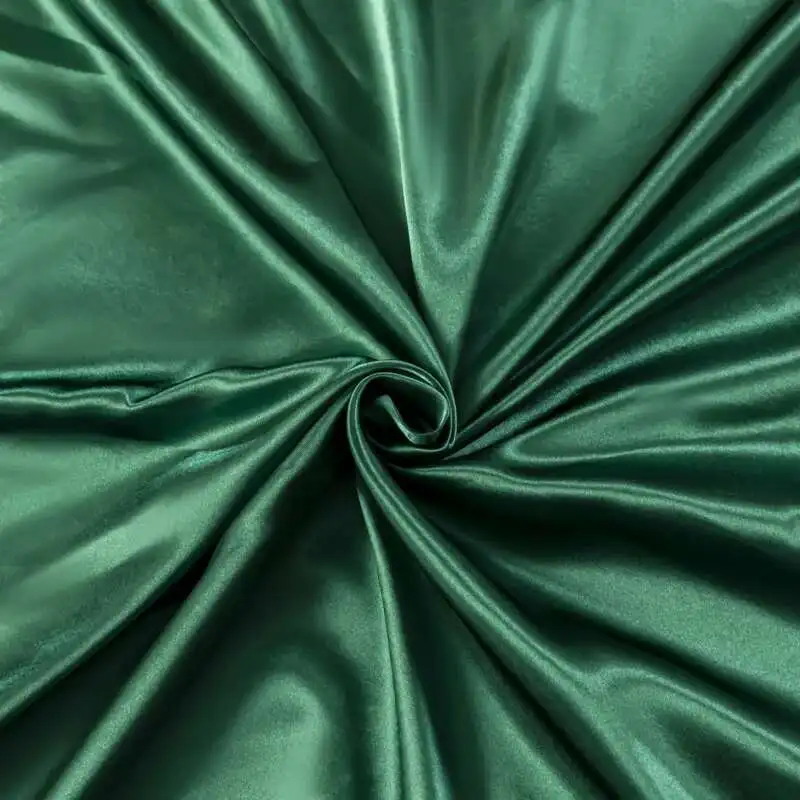
Charmeuse Weave: The Quintessential Silk Bedding Weave
Charmeuse is widely considered the pinnacle of luxury silk weaves for bedding, creating the quintessential silk experience that most people envision. This sophisticated weaving technique creates fabric with two distinct sides: a lustrous, smooth face and a more subtle, matte back.
The distinctive characteristics of charmeuse silk include:
Weaving structure: In charmeuse, four or more weft (horizontal) yarns float over a single warp (vertical) yarn before going under one warp yarn. This creates long “floats” on the front surface that reflect light beautifully.
Sensory experience: The face side feels exceptionally smooth and slippery—almost liquid-like against the skin. This quality makes charmeuse ideal for reducing friction against hair and skin during sleep.
Visual qualities: Charmeuse captures and reflects light magnificently, creating that coveted silky shimmer that instantly communicates luxury. The level of shine can range from subtle to pronounced depending on the specific construction.
Drape and movement: The fabric flows and puddles elegantly, conforming beautifully to contours and creating a visually sumptuous bed.
Practical considerations: While supremely luxurious, charmeuse requires careful handling as the long floats on the surface can catch on rough skin or jewelry, potentially causing snags. The fabric’s slippery nature may also make it challenging to keep in place on the bed.
Charmeuse weave is ideal for pillowcases, sheets, and duvet covers where the smooth surface will be in direct contact with skin. Understanding the differences between charmeuse and habotai silk can help you choose the right option for your specific bedding needs.
Plain Weave Silk: Lightweight and Versatile
Plain weave silk (sometimes called habotai or China silk) represents the most fundamental weaving pattern, with warp and weft threads interlacing in a simple over-under pattern. This creates a fabric with a more balanced structure than charmeuse but still maintains silk’s natural benefits.
The characteristics that define plain weave silk include:
Texture and feel: Plain weave creates a smooth but slightly crisp hand feel with less slipperiness than charmeuse. The fabric has a flatter surface with minimal floats.
Visual appearance: This weave offers a more subtle, natural sheen rather than the high luster of charmeuse. It reflects light more evenly and in a more muted fashion.
Practical benefits: The balanced structure makes plain weave silk more durable and less prone to snagging than charmeuse. It’s typically easier to care for and often more affordable.
Breathability: The simple weave structure allows excellent air circulation, making plain weave silk especially suitable for hot sleepers seeking comfortable silk options.
Versatility: Plain weave adapts well to various finishing techniques and works excellently for sheets, pillowcases, and summer-weight duvet covers.
While plain weave lacks some of the dramatic luxury appearance of charmeuse, many sleepers prefer its more balanced feel and practical benefits. It offers a more subtle silk experience that still provides temperature regulation and skin benefits without the maintenance concerns of more delicate weaves.
Twill Weave Silk: Durable and Distinctive
Twill weave silk stands out for its distinctive diagonal rib pattern and exceptional durability. In this weaving structure, weft threads pass over one or more warp threads and then under two or more warp threads in a staggered sequence that creates the characteristic diagonal lines.
Key attributes of twill weave silk for bedding include:
Visual character: The diagonal ribs create subtle texture and visual interest visible in the fabric’s surface, adding dimension without elaborate patterns.
Structural strength: The staggered thread alignment distributes tension more evenly throughout the fabric, creating better resistance to wear and tear than plain or charmeuse weaves.
Wrinkle resistance: Twill naturally resists wrinkling better than other silk weaves, maintaining a neater appearance with less maintenance.
Drape and feel: Twill silk drapes beautifully with a substantial hand feel that’s less slippery than charmeuse but still smooth and comfortable.
Density and weight: Typically heavier and more substantial than plain weave or charmeuse, twill provides extra warmth and a feeling of security.
These qualities make twill weave particularly well-suited for duvet covers, bed skirts, and other bedding applications where durability is as important as luxury. Twill’s structural properties also allow it to hold up better to regular laundering, making it practical for everyday use while still providing silk’s natural benefits.
For those interested in exploring more options, our comprehensive guide to silk weave patterns provides additional information about various weaving techniques and their applications.
Jacquard Weave Silk: Elegant and Decorative
Jacquard silk represents the height of decorative weaving, allowing for intricate patterns to be woven directly into the fabric rather than printed on the surface. This sophisticated technique requires a specialized jacquard loom that individually controls each warp thread, enabling complex designs with extraordinary detail.
The distinguishing features of jacquard silk include:
Pattern complexity: Jacquard weaving can create elaborate florals, geometric designs, damasks, and other complex patterns that become part of the fabric structure itself.
Textural dimension: The patterns have both visual and tactile presence—you can often feel the design elements as subtle texture variations in the fabric surface.
Visual richness: Jacquard designs often incorporate areas of different weave types (like satin and twill) within the same fabric, creating contrast in both texture and light reflection.
Structural integrity: Despite their decorative nature, jacquard weaves are generally quite durable due to their complex thread interlacing.
Weight and body: Jacquard silks typically have more substantial weight and structure than simpler weaves, giving them excellent drape with a luxurious hand feel.
In bedding applications, jacquard silk excels as duvet covers, decorative shams, and ornamental bed accessories where its visual impact can be fully appreciated. The intricate patterns add depth and sophistication to a bedroom, often becoming the centerpiece of the room’s design scheme.
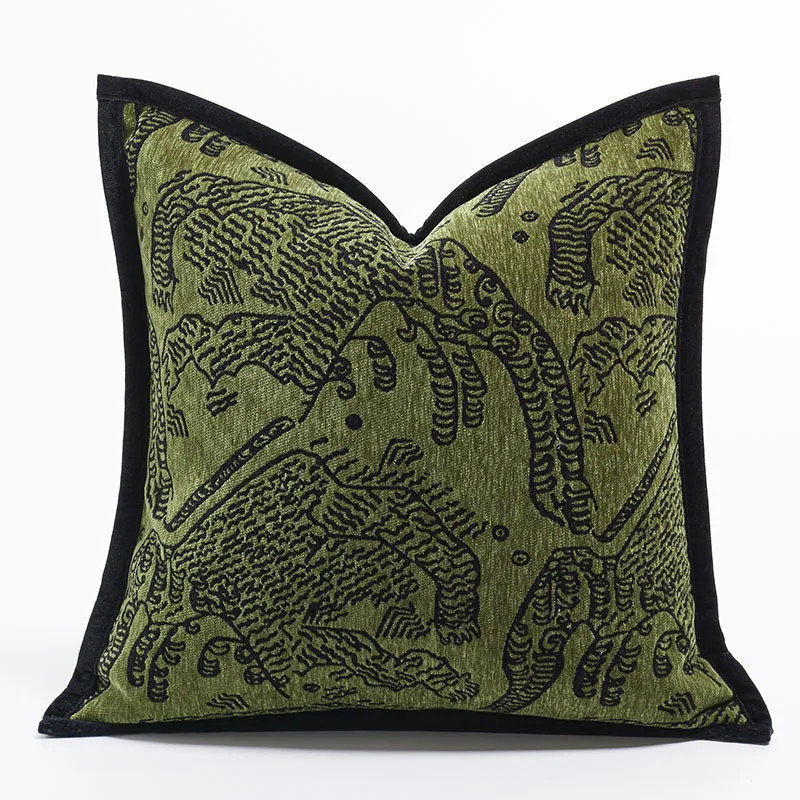
Dobby Weave Silk: Subtle Texture and Pattern
Dobby weave silk occupies a middle ground between plain weaves and elaborate jacquards, offering subtle, geometric patterns that add visual interest without overwhelming drama. This weaving technique utilizes a specialized dobby attachment on the loom that controls groups of warp threads to create small, repeated patterns.
The distinctive qualities of dobby weave silk include:
Pattern scale: Dobby creates small-scale, precise geometric elements like dots, diamonds, squares, or simple florals that repeat across the fabric.
Subtle texture: The patterns create gentle texture variations that provide tactile interest while maintaining overall smoothness.
Visual subtlety: Unlike bold jacquard designs, dobby patterns offer understated sophistication that’s noticeable up close but reads as textured rather than patterned from a distance.
Structural balance: Dobby weaves generally maintain good durability while adding decorative elements, balancing form and function.
Versatility: The subtle nature of dobby patterns makes them easily integrated into various design schemes without competing with other elements.
Dobby silk works beautifully for sheets with decorative borders, pillowcases with subtle pattern interest, and bedding accessories where a hint of texture enhances the overall aesthetic. This weave is perfect for adding refined visual complexity without the formality or boldness of jacquard patterns.
Our collection of Mulberry silk bedding sets includes options with various weave types to suit different preferences and needs.
Choosing the Right Silk Weave for Your Bedding
Selecting the ideal silk weave for your bedding involves balancing personal preferences, practical considerations, and the specific function of each bedding item. Use these guidelines to make informed choices:
For sheets and pillowcases:
– Charmeuse if you prioritize maximum smoothness, luxurious sheen, and skin/hair benefits
– Plain weave if you prefer breathability, easier care, and a more moderate price point
– Dobby if you want subtle texture while maintaining comfort
For duvet covers:
– Charmeuse for ultimate luxury with maximum drape and shine
– Twill for excellent durability with elegant appearance
– Jacquard for decorative impact and visual sophistication
For decorative elements:
– Jacquard for maximum visual impact and textural interest
– Dobby for subtle pattern without overwhelming design
Consider your personal comfort factors:
– Hot sleepers may prefer the breathability of plain weave
– Those with sensitive skin often appreciate the frictionless surface of charmeuse
– Practical users might value the durability and wrinkle resistance of twill
The ideal approach often combines different weaves within a bedding ensemble, such as charmeuse pillowcases for hair and skin benefits paired with plain weave sheets for durability and breathability. Exploring the best silk weaves for bedding can help you create your perfect sleep sanctuary.
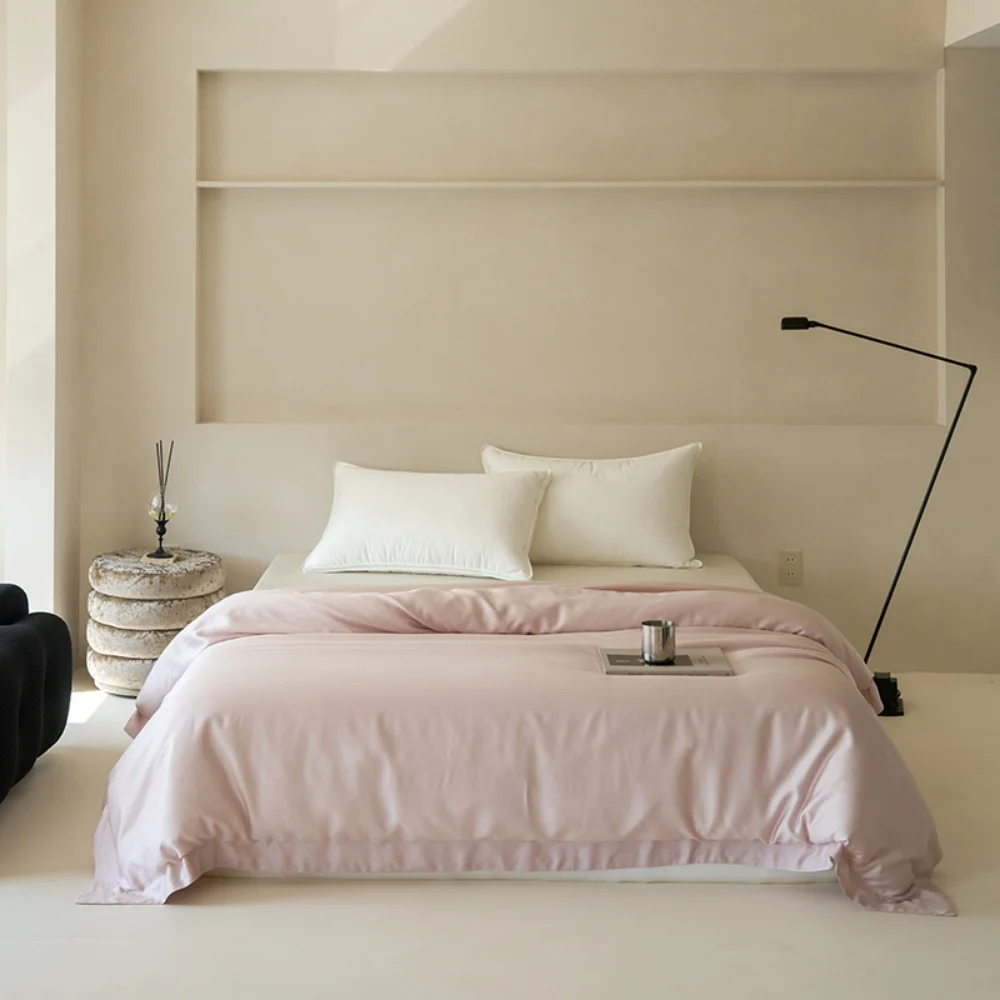
Full-size Silk Sheets, King Size Silk Sheets, Queen Size Silk Sheets, Twin Size Silk Sheets, Washable Silk Sheets
Price range: $95.95 through $178.37 Select options This product has multiple variants. The options may be chosen on the product page100% Silk Sheets, Green Silk Sheets, King Size Silk Bedding Set, Mulberry Silk Bedding Sets, Queen Size Silk Bedding Set
Price range: $1,246.21 through $1,615.22 Select options This product has multiple variants. The options may be chosen on the product pagePink Silk Sheets, Twin Size Silk Sheets
$171.80 Select options This product has multiple variants. The options may be chosen on the product pageFull-size Silk Sheets, Pink Silk Sheets
$136.31 Select options This product has multiple variants. The options may be chosen on the product pageFull Silk Bedding Set, King Size Silk Bedding Set
Price range: $120.99 through $190.49 Select options This product has multiple variants. The options may be chosen on the product pageGrey Silk Sheets, Silk Sheet and Pillowcase Set
Price range: $88.20 through $146.64 Select options This product has multiple variants. The options may be chosen on the product page
Proper Care for Different Silk Weaves
Proper maintenance ensures your silk bedding remains beautiful and functional for years to come. While all silk requires gentle handling, specific weaves may need slightly different care approaches:
General Silk Care Guidelines:
– Wash in cold water using pH-neutral, enzyme-free detergents specifically formulated for silk
– Hand washing is safest, but machine washing on the gentlest cycle in a mesh bag is acceptable for most silk bedding
– Never use bleach, fabric softeners, or optical brighteners
– Air dry away from direct sunlight to prevent yellowing and fabric weakening
– Store in breathable cotton bags, not plastic
Weave-Specific Care Tips:
For Charmeuse:
– Take extra precautions against snags by removing jewelry before handling
– Use rolled rather than folded storage to prevent sharp creases
– If ironing is necessary, use the lowest silk setting on the reverse (matte) side
For Jacquard and Textured Weaves:
– Avoid scrubbing textured areas, which can damage pattern definition
– Press patterned areas with minimal steam to preserve dimensional quality
– Store flat when possible to maintain pattern integrity
For Plain Weave:
– Gently shake while damp to minimize wrinkles
– Can usually withstand slightly more agitation during washing than delicate charmeuse
All silk bedding benefits from airing out between washings and rotating use to extend lifespan. With proper care, quality silk bedding can last for many years while maintaining its beauty and performance.
Our silk bedding sets are designed to be as durable as they are luxurious when properly maintained.
Is Silk Bedding Worth the Investment?
When considering the higher price point of quality silk bedding, many wonder if the investment is truly justified. To make an informed decision, consider these factors:
Longevity perspective: Quality silk bedding, when properly cared for, can last for many years—significantly longer than cotton alternatives. This extends the cost-per-use value substantially.
Health and beauty benefits: Silk’s natural properties support skin health, reduce hair breakage, and help regulate temperature and humidity during sleep. These benefits compound night after night.
Sleep quality improvements: Many users report deeper, more comfortable sleep on silk bedding due to its temperature regulation and smooth texture.
Sustainable approach: High-quality silk bedding requires replacement less frequently than lower-quality alternatives, reducing consumption over time.
Gradual investment strategy: Starting with silk pillowcases delivers many benefits at a lower initial investment before committing to complete sets.
For those particularly concerned about value, certain weaves offer better longevity: twill weave provides excellent durability for everyday use, while plain weave offers good balance between price and performance. Charmeuse delivers the quintessential silk experience but may require more careful handling to maintain its quality over time.
Our collection of 100% silk sheets represents a worthwhile investment in your sleep quality and overall wellbeing.
Frequently Asked Questions About Silk Weaves and Bedding
Is higher momme always better for silk bedding?
Not necessarily. While higher momme indicates denser, more durable fabric, the ideal weight depends on the specific application. For sheets, 19-25 momme offers the best balance of durability and comfort. Ultra-high momme counts (30+) may feel too heavy for some sleepers.
Can I put silk bedding in the washing machine?
Most silk bedding can be machine washed using a gentle cycle, cold water, and silk-specific detergent in a mesh laundry bag. However, very delicate weaves or items with extensive decoration may require hand washing.
How long does silk bedding typically last?
With proper care, quality silk bedding can last 5-10 years or more. Twill and plain weaves tend to be the most durable, while delicate charmeuse may show wear sooner if not carefully maintained.
Will silk bedding make me too hot in summer?
No, silk naturally regulates temperature by wicking moisture and allowing airflow. It keeps you cool in summer and warm in winter, making it appropriate for year-round use. Plain weave silk offers maximum breathability for hot sleepers.
How can I tell if I’m buying real silk with the advertised weave?
Genuine silk has a distinctive smooth feel that’s cool to the touch initially but quickly warms. The burn test (silk burns slowly with a smell like burning hair) can confirm natural fiber content, while close examination of the weave pattern under magnification can verify the advertised structure.
Do different silk weaves require different care routines?
While basic silk care principles apply to all weaves, more delicate structures like charmeuse require extra precautions against snagging, while textured weaves like jacquard may need specific ironing techniques to preserve their patterns.
Our luxury silk bedding sets and silk sheets collections feature a variety of weaves to meet different needs and preferences.

